The USS Fitzgerald Is Built to Take Abuse
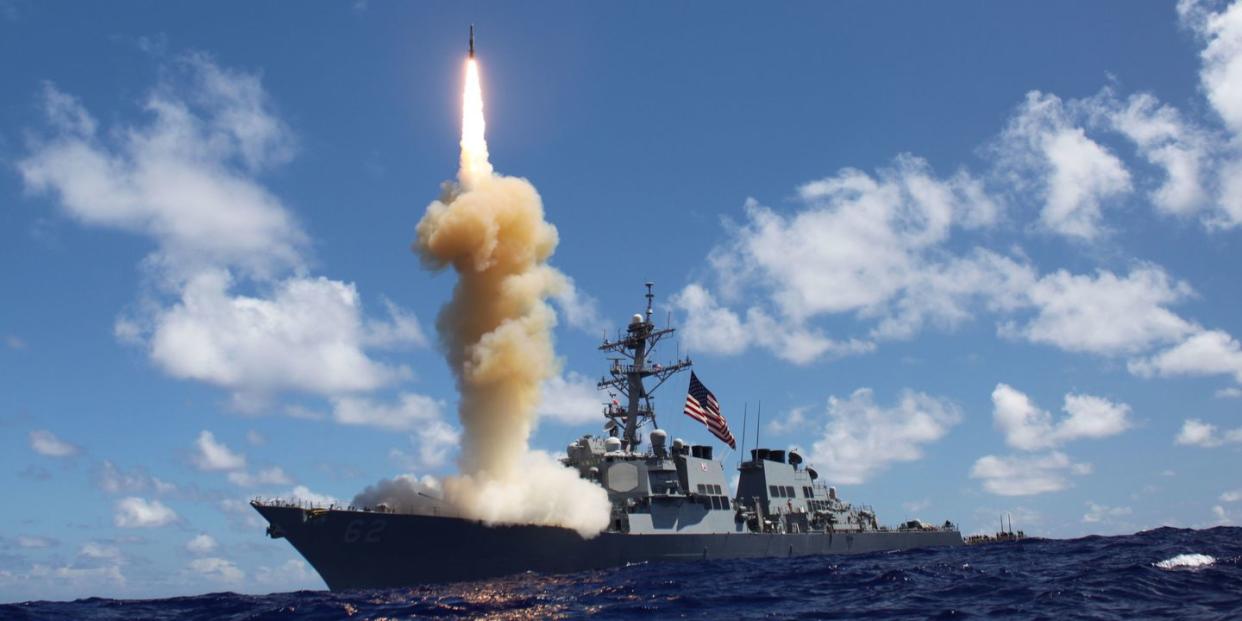
- Oops!Something went wrong.Please try again later.
This weekend's collision between the guided missile destroyer USS Fitzgerald and the cargo carrier ACX Crystal has highlighted the role Arleigh Burke-class destroyers play in U.S. naval operations worldwide. The collision, which occurred 58 miles off the coast of Japan, killed seven sailors and injured dozens more. Designed during the Cold War to help protect carrier battle groups, the Burke destroyers are the most capable surface warships ever put to sea by the U.S. Navy.
The Arleigh Burke class guided missile destroyers were conceived in the 1980s as anti-air warfare destroyers designed to shoot down Soviet missiles. During the Cold War it was widely believed that the Soviet Air Force and Navy would launch coordinated barrages of anti-ship missiles at U.S. Navy aircraft carriers, all of which carried extremely large warheads—and which could also carry nuclear warheads.
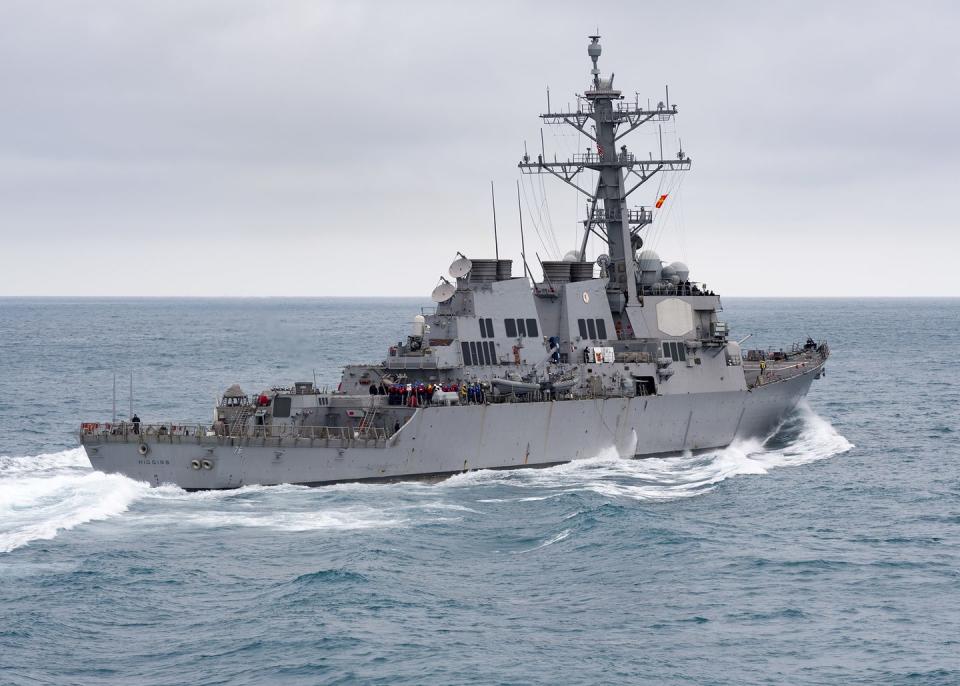
In response, the U.S. Navy built up a layered defense system consisting of F-14 Tomcat fighters at the farthest edge, and Phalanx close-in weapon systems as a last-ditch defense. In between were the Ticonderoga-class guided missile cruisers and backing them up, the Arleigh Burke-class guided missile destroyers.
The Burke-class destroyers were named after Admiral Arleigh Burke, who rose to fame commanding destroyer squadrons during World War II and later became Chief of Naval Operations. The first destroyer entered service in 1991, just as the Cold War was winding down, but construction continued on schedule and the last and 62nd ship in the class, Michael Murphy, was commissioned in 2012.
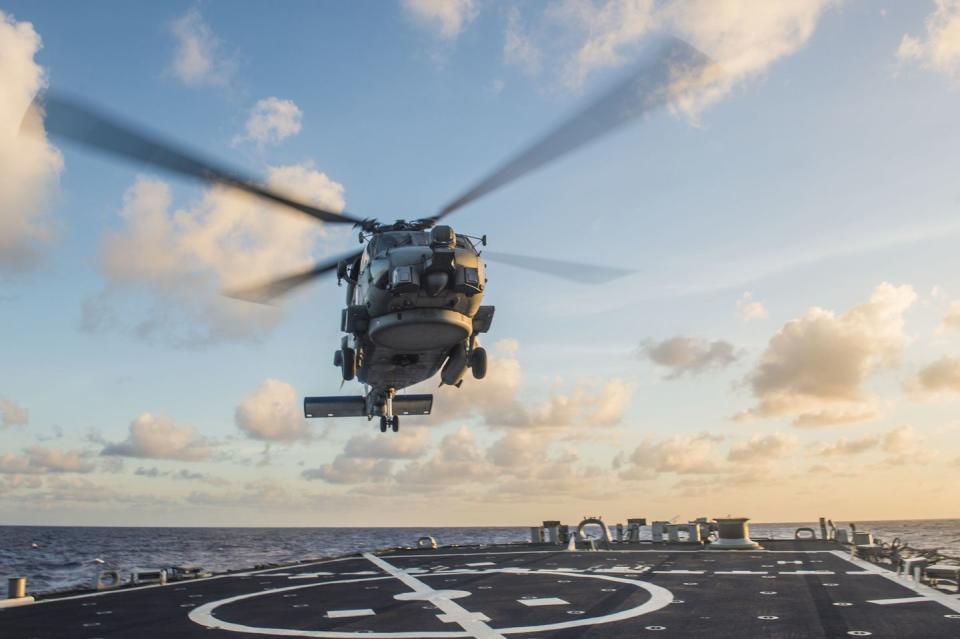
Like their namesake, nicknamed "31 Knot Burke," the ships are speedy, each powered by four General Electric LM2500 Gas Turbine Engines with a combined rating of more than 100,000 horsepower. This drives the 8,100 to 9,600 ton destroyer (depending on the variant) to speeds of more than 30 knots. The ships have extensive damage control capabilities, steel spaced armor to defeat shaped charges, and kevlar armor protecting key areas.
The Burkes were designed around the Aegis Combat System, combining the AN/SPY-1 phased array air defense radar with the SM-2 Medium Range Block III surface-to-air missile. The combination of the two made the Burkes a potent anti-air platform capable of detecting and tracking hundreds of targets at once. The 90 vertical launch silos, later increased to 96, mean the ship could carry scores of air defense missiles, each of which had a high probability of kill against enemy aircraft, anti-ship missiles, and cruise missiles.
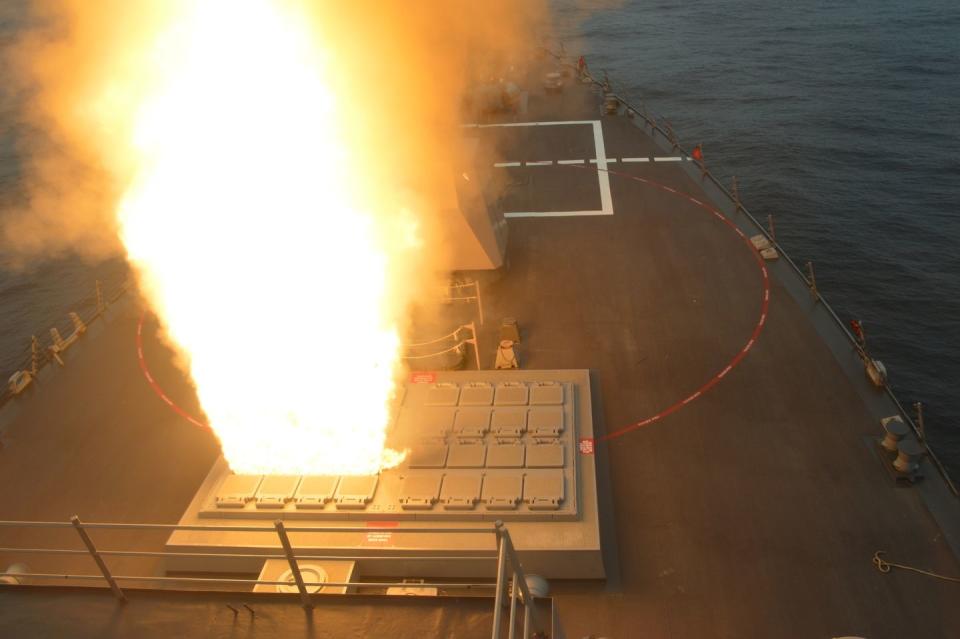
Unlike previous ships, which used dual missile launching rails fed from a central internal magazine, the Burkes were designed from the start with the Mk. 41 vertical launch system (VLS). Consisting of individual silos, each Mk. 41 can hold a single SM-2 surface-to-air missile, SM-3 ballistic missile interceptor, Tomahawk cruise missile, ASROC anti-submarine rocket torpedo, and Enhanced Sea Sparrow short-range surface-to-air missile. The distributed nature of the VLS system meant that the ship wouldn't lose firepower to a rail or magazine malfunction.
Despite the emphasis on anti-air warfare the Burkes can perform other roles, particularly anti-submarine warfare. Each has a AN/SQS-53C hull mounted sonar and a AN/SQR-19 tactical towed sonar array that is trailed behind the ship to aid in submarine detection to the rear, past the noise generated by the destroyer's props. The Burkes also have two Mark 32 triple tube anti-submarine torpedo launchers, for a total of six torpedoes, plus rocket propelled ASROC anti-sub rockets in the vertical launch silos for engaging submarines at longer ranges.
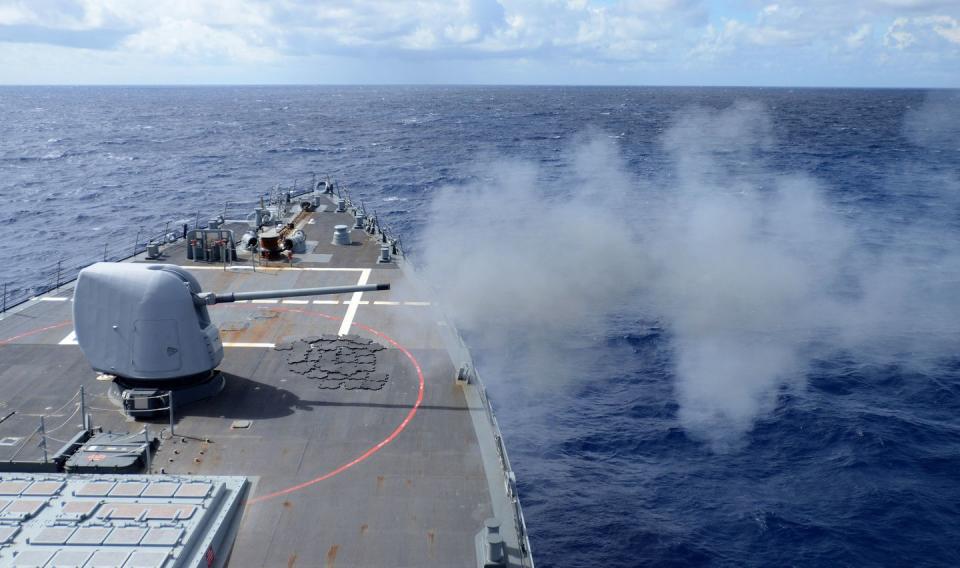
In the land attack role, the Burkes have a single 5-inch gun (127-millimeter) gun mounted in the bow. The Mk. 45 gun system has a range of 13 miles and is fed by a 600 round armored magazine deep within the ship. The Mk. 45 is useful against shore targets and other ships. New ammunition with proximity fuses is being developed to counter swarms of small armed boats, exploding in the air and peppering hostile, speedboat-sized ships with lethal shrapnel. A new hypervelocity round is also in the works designed to engage air, sea and land targets, and even incoming ballistic missile warheads.
The Burke class destroyers are also capable of carrying the Tomahawk land attack cruise missiles. The April 2017 strike on a Syrian airfield that carried out chemical weapons strikes was carried out by two Burke destroyers, the USS Porter and the USS Ross, which struck the Al-Shayrat Air Base with 59 Tomahawk missiles. This suggests each destroyer's 90-96 silos include 30 Tomahawks plus other missiles. The subsonic missiles are capable of flying up to 900 miles, staying low to evade enemy air defenses, and delivering a 1,000 pound high explosive warhead with an accuracy of within 10 meters.
Finally, the ship has a variety of light weapons to deal with smaller threats. The ship has a single Phalanx close-in weapon system for intercepting any "leakers" that manage to make it through the wall of defensive missiles, and the Phalanx is also useful against small boat swarms. It also has two M242 Bushmaster 25-millimeter rapid-fire cannons, the same that arm the U.S. Army's Bradley Fighting Vehicle, for the small boat threat.
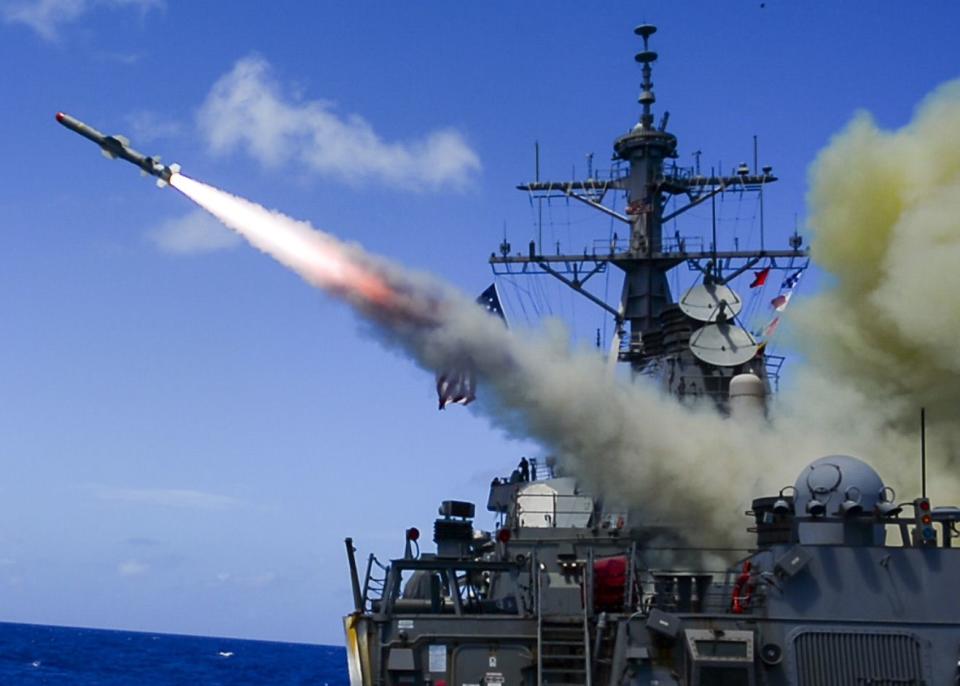
Despite the traditional role of the destroyer as an anti-ship platform the majority of the Arleigh Burke destroyers have no dedicated anti-ship missile at all. While 28 of the ships are armed with eight Harpoon anti-ship missiles, 34 of the ships were constructed with no Harpoon missiles at all. Built during an era that emphasized ship to shore firepower over ship to ship firepower, these 34 ships must rely on using SM-2 surface to air missiles to strike other warships.
The versatility of the Arleigh Burke destroyers has been enhanced with a series of modifications. Starting with the 29th destroyer in the class, USS Oscar Austin, hangars for the permanent basing of two helicopters were added to each ship. Typically, each ship carries one anti-submarine and one utility/light attack version of the MH-60 Seahawk. Fifteen of the destroyers, including the USS Fitzgerald, have been fitted with the ballistic missile defense variant of the Aegis combat system, giving the ship an additional capability to track and engage incoming ballistic missiles with SM-3 Block 1B interceptors. These destroyers are split between the Western Pacific and Mediterranean where they provide regional missile defense.
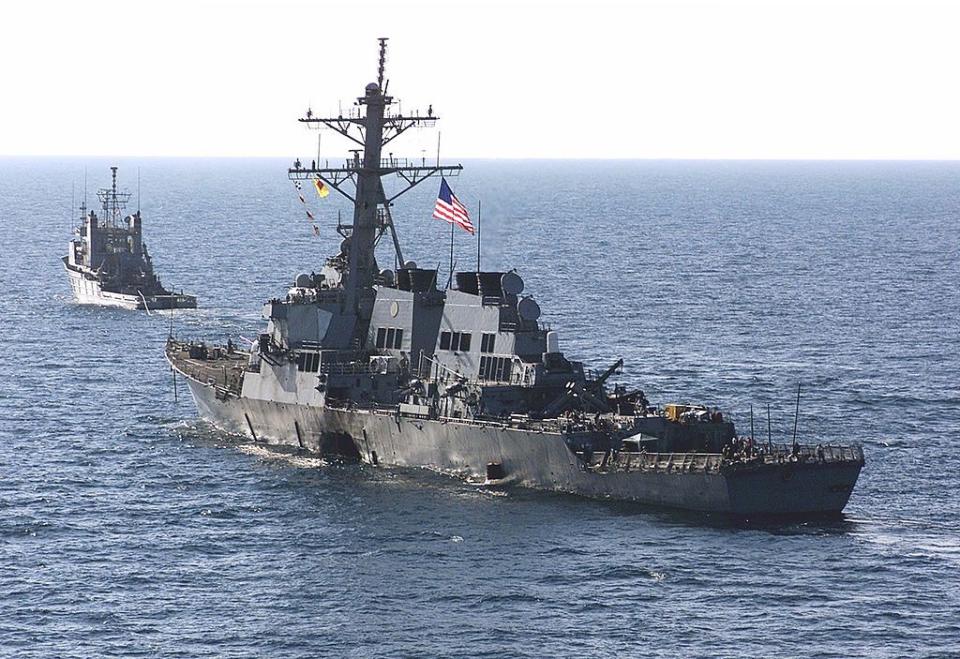
In October 2000 the Burke-class vessel USS Cole was docked in Yemen harbor when a small craft came alongside and detonated an estimated 400 to 700 pounds of explosives. The explosion killed 17 sailors, injured 39 others, and created a gaping 40 by 60 foot hole in the ship's hull at the waterline. Despite the damage the Cole was repaired and still serves today.
The attack on the USS Cole—and the collision involving the USS Fitzgerald—demonstrates that these ships, armed to the teeth, are hardy, survivable ships capable of taking enormous damage and staying afloat. Still, as hardy as a ship can be it's the crew that matters, and by all accounts the crew of the USS Fitzgerald performed heroically to treat their wounded, search for the missing, and keep the ship afloat.
You Might Also Like

